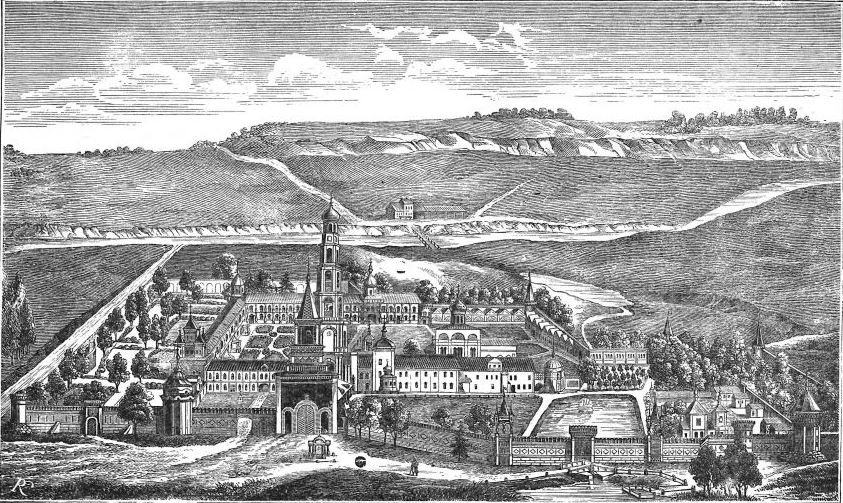History of Dzerzhinsky
14th Century
Foundation of the Nikolo-Ugreshsky Monastery
![]()
The history of modern day Dzerzhinsky starts at the end of the 14th Century and is completely linked with the foundation of the Nikolo-Ugreshsky Monastery. In 1380 on his way to meet the Mongol-Tatars at the Battle of Kulikovo Field, Grand Prince Dmitry Ivanovich (who came to be known as Dmitry Donskoy after the battle) set up camp in the area of modern day Dzerzhinsky. Whilst there a miracle working icon of St Nicholas is said to have appeared to him. After success in battle Dmitry Donskoy ordered the founding of a monastery where the icon of St Nicholas appeared and named the monastery Ugreshsky, from the Old Russian word for "to warm" as Dmitry said the icon warmed his heart before setting off for battle. Several villages arose around the monastery which would eventually be incorporated into the city of Dzerzhinsky.
16th Century

In 1521 Khan Mehmed I Geray of Crimea sacked the Nikolo-Ugreshsky Monastery as part of his devastating raid on Russia. In 1545 Ivan the Terrible donated to the monastery land and in 1546 visited the monastery to pray at the Icon of St Nicholas.
17th Century
In 1606 monks from the Nikolo-Ugreshsky Monastery took part in the coronation of Tsar Vasili Shuisky. In 1610 the Second False Dmitry arrived at the monastery until he was forced to flee onwards to Kaluga. Later in 1611 the monastery became one of the gathering points for the First People's Volunteer Army in an attempt to free Russian land from the Polish occupiers. In 1614 Tsar Michael visited the monastery for the first of what were many pilgrimages there. He returned there almost annually, as did his son Tsar Alexis. Peter the Great also visited the monastery several times. In 1698 it was used to imprison the streltsy who rose up against Peter the Great.
19th Century

In 1812 the monastery was attacked by French troops who briefly occupied it. However the monastery's sacristy had previously been evacuated to Vologda for safekeeping.
20th Century
Incorporation of Dzerzhinsky

In 1920 the monastery's buildings were used to house a child labour commune in an attempt to help solve the problem of street children who were now in abundance in Russia due to the bloodshed of the revolution and the civil war. The colony later reorganised into a labour commune at the initiative of Feliks Dzerzhinsk, the feared leader of the Cheka (the forerunner to the KGB), and named in his honour as the Kommuna imeni Dzerzhinskogo (Dzerzhinsky Commune). The commune and the neighbouring villages were later reorganised in 1938 as the urban settlement of Dzerzhinsky. In 1956 one of the largest thermal power stations in the country was built in Dzerzhinsky and new housing estates were developed. In 1981 Dzerzhinsky was awarded city status and in 1996 it became a city of regional significance.

 History
History